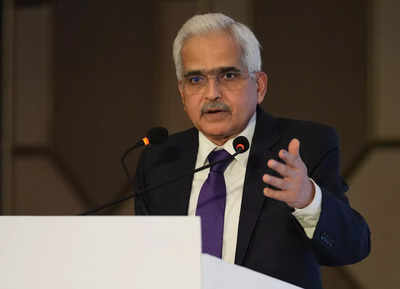Das has repeatedly said the RBI wants to see inflation settling around the 4% target level on a durable basis before considering a cut.
India’s central bank governor
Shaktikanta Das
said an
interest rate cut
at this stage would be “very, very risky” and he’s in no hurry to join the wave of easing by global policymakers.
While
inflation
is expected to moderate, there are “significant risks” to the outlook, Das told Bloomberg News Deputy Editor-in-Chief Reto Gregori at the India Credit Forum in Mumbai on Friday.
Inflation and growth dynamics are well balanced, he said, but policymakers need to remain vigilant about price pressures.
The Reserve Bank of India has kept its key interest rate unchanged for almost two years, although signaled last week it may be preparing to ease after changing its policy stance to neutral. That comes as central banks around the world follow the US Federal Reserve in reducing interest rates, with Thailand the latest to surprise with a cut this week.
Responding to a question about global central bank easing, Das said “we will not miss the party, we don’t want to join any party.”
Indian bonds extended losses after his comments, with the 10-year yields rising as much as 4 basis points — the most in two weeks — to 6.82%.
Das pushed back against some analyst views that the RBI was “behind the curve” in cutting rates. Market expectations were aligned with the central bank actions, he said, citing last week’s policy decision that was predicted by most economists.
“The governor’s comments show rate cuts may not happen before February, or it may get even delayed if actual inflation does not align with the target,” said Gaurav Kapur, chief economist at IndusInd Bank Ltd. “Given the comfort on growth, the monetary policy committee can continue to focus on price stability.”
Das’s comments on Friday were his first public reaction since data this week showed inflation accelerated more than expected in September. Das said October’s inflation rate will remain elevated before moderating in November.
That’s made the timing of a rate cut uncertain, with several economists pushing out their rate-cut forecasts from December to next year.
“A rate cut at this stage can be very premature and can be very, very risky,” Das, 67, said. “When your inflation is 5.5% and your next print is also expected to be high, you can’t be cutting rate at that stage.”
Not joining the party
Das has repeatedly said the RBI wants to see inflation settling around the 4% target level on a durable basis before considering a cut. Deputy Governor Michael Patra has indicated that won’t happen until the fiscal year that starts April 1.
“We would rather like to wait and watch,” Das said. “If we want to join the party we want to do it on a durable basis. When we have confidence, inflation figure is durably aligned with our target 4% that may be a situation where we can think of” easing, he added.
Future monetary policy action will depend on incoming data as well as the inflation outlook for the next six months to a year, the governor said.
Das’s relatively hawkish comments come against the backdrop of recent evidence showing India’s world-beating growth is starting to taper off and company profits are weakening.
The RBI is more bullish about growth prospects, though, compared with the market consensus and even the government. Das last week kept the central bank’s forecast for the current fiscal year unchanged at 7.2%, while the government’s own projection is a more subdued 6.5%-7%.
On the currency, the governor on Friday reiterated the RBI isn’t trying to manage the exchange rate and the rupee has been depreciating in response to the overall movement of the dollar.
The RBI is building its
foreign exchange reserves
as a “safety net” to protect against any instability from volatile capital flows, he said. The central bank has no specific target for building reserves, he added.
India’s foreign exchange reserves are the world’s fourth largest, recently crossing the $700 billion mark as the RBI soaks up dollar inflows to keep the rupee stable.
Contract extension
A long-time bureaucrat, Das, took the helm at the central bank in December 2018 after his predecessor Urjit Patel resigned unexpectedly. Das’s second term contract comes to an end in December this year, and neither the government nor Das have given any indication whether he will remain in the post after that.
Asked about his future, Das was typically coy, saying he’s preoccupied with his current work at the RBI and hasn’t given any thought about whether he’ll stay on in the position if he’s offered another extension.
“At the moment, that is certainly not in my mind,” he said. The central bank must finalize a few draft guidelines, and announce an interest rate decision before Das’s current term comes to an end in early December.
“Already my table is full, so I have no time to really think of what next,” he said. “We will see.”


